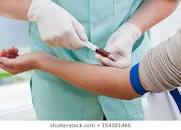Or to put this differently, IVC and Velcade both work better, kill more monoclonal proteins, if you have normal iron blood levels.
Hi David- A quick question about Intravenous Vitamin C (IVC). I have noticed in a few studies you have posted on the MM coaching course that intravenous Vitamin C “in the presence of iron” kills myeloma cells.

My question is, must an intravenous Vitamin C dose be accompanied by an intravenous iron dose as well?
I will have my blood test tomorrow and part of that test will measure my iron levels. Will see the results later on in the week and go from there. I think if my iron levels are low, I may need to get an intravenous iron as well as intravenous vit C (IVC). Thanks, Brad
Hi Brad,
The short answer to your question is that I don’t know if an iron infusion is required. The longer explanation is that according to the research linked below,
- Curcumin
- Velcade (Bortezomib)
- MGUS and
- MM
all can cause iron deficiency aka anemia. My interpretation of the articles that document IVC “in the presence of iron” was that the patient can not be anemic aka iron deficient to achieve apoptosis of monoclonal proteins aka MM cells.
Or to put this differently, intravenous vitamin c (IVC) and Velcade both work better, kill more monoclonal proteins, if you have normal iron blood levels.
As you know I rely on diagnostic information for many therapy decisions. It seems to me that iron deficiency is an important issue to pay attention to if you are undergoing IVC therapy.
Yes, if your blood tests indicate that you are iron deficient then yes, I would supplement with iron drops or some other form of iron supplementation.
Thanks,
- MM Survivor
- MM Cancer Coach
- Director PeopleBeatingCancer
Recommended Reading:
“High-dose chemotherapies to treat multiple myeloma (MM) can be life-threatening due to toxicities to normal cells and there is a need to target only tumor cells and/or lower standard drug dosage without losing efficacy.
We show that pharmacologically-dosed ascorbic acid (PAA), in the presence of iron, leads to the formation of highly reactive oxygen species (ROS) resulting in cell death. PAA selectively kills CD138+MM tumor cells derived from MM and smoldering MM (SMM) but not from monoclonal gammopathy undetermined significance (MGUS) patients. PAA alone or in combination with melphalan inhibits tumor formation in MM xenograft mice. This study shows PAA efficacy on primary cancer cells and cell lines in vitro and in vivo…
Results
We analyzed the response to PAA of both CD138+ primary MM cells (high cytosolic iron) and CD138−non-MM bone marrow (BM) cells obtained from 13 patients. The 13 patients included 2 pre-cancer of monoclonal gammopathy of undetermined significance (MGUS), 2 smoldering MM (SMM) and 9 MM patients…
The survival of CD138+ cells in vitro was significantly decreased following PAA treatment in all 9 MM patients…
In contrast, no significant change of cell viability was observed in CD138− BM cells from the same patients. The same effect of PAA was also observed in the SMM patients. However, almost no response to PAA was detected in CD138+ cells from the 2 MGUS patients.
We predicted that this would be the case because MGUS patients have much lower cytosolic iron compared to MM patients as the consequence of lower expression of transferrin receptor 1, the cellular iron receptor-mediated importer, and higher expression of Ferroportin 1 (Fpn1), the iron exporter…
“Turmeric is increasingly studied as an anti-inflammatory and anti-neoplastic agent. It binds to ferric iron in the gut and causes iron deficiency in mice. We report here a possible case of iron deficiency anemia in a human taking turmeric.
A 66-year-old physician treated himself for an osteoarthritis flare after steroids with six turmeric extract capsules (538 mg) daily, to help with inflammation. During this time, his hemoglobin never rose above 12 and his iron and ferritin levels were consistent with iron deficiency. Upper and lower endoscopy and Hemoccult™ studies were negative. Two weeks after stopping the turmeric and continuing his usual iron supplement, his hemoglobin had returned to normal, with normalizing iron studies. Turmeric was associated with significant iron deficiency anemia, consistent with the binding of available iron in the gut and the prevention of absorption. This resolved after the turmeric was stopped, consistent with animal studies.
This may be the first case of documented iron deficiency anemia in people due to turmeric supplements. Given the widespread use of turmeric and curcumin supplements across many illnesses, further attention is warranted”
“Introduction: Anemia in plasma cell in multiple myeloma (MM) is found in 60–90 % of the patients, and is usually noromocytic and normochromic. Rarely, iron deficiency anemia (IDA) occurs with microcytic and hypochromic red blood cells, however the pathogenesis remains unknown.
Case Report: A 75-year-old male with monoclonal gammopathy of undetermined significance (MGUS) had iron deficiency anemia (IDA) with microcytic and hypochromic red blood cells. The serum levels of erythropoietin (EPO), interleukin-6(IL-6) and hepcidin-25 were normal. The administration of oral iron ameliorated IDA.
Conclusion: The cause of IDA in the present patient was unknown. The administration of oral iron improved IDA.”
“Multiple myeloma is a malignant still incurable plasma cell disorder. Pharmacological treatment based on proteasome inhibition has improved patient outcome; however, bortezomib-resistance remains a major clinical problem.
Inhibition of proteasome functionality affects cellular iron homeostasis and iron is a potent inducer of reactive oxygen species and cell death, unless safely stored in ferritin…
We analyzed iron proteins, oxidative status and cell viability in 7 multiple myeloma cell lines and in plasma cells from 5 patients. Cells were treated with increasing bortezomib concentrations with or without iron supplementation. We reduced ferritin levels by both shRNA technology and by drug-induced iron starvation. Multiple myeloma cell lines are characterized by distinct ferritin levels, which directly correlate with bortezomib resistance.
We observed that iron supplementation upon bortezomib promotes protein oxidation and cell death, and that iron toxicity inversely correlates with basal ferritin levels. Bortezomib prevents ferritin upregulation in response to iron, thus limiting the ability to buffer reactive oxygen species.
Consequently, reduction of basal ferritin levels increases both bortezomib sensitivity and iron toxicity. In patients’ cells, we confirmed that bortezomib prevents ferritin increase, that iron supplementation upon bortezomib increases cell death and that ferritin reduction overcomes bortezomib resistance. Bortezomib affects iron homeostasis, sensitizing cells to oxidative damage. Modulation of iron status is a strategy worth exploring to improve the efficacy of proteasome inhibition therapies…”




